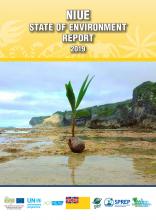The Republic of the Marshall Islands: State of the Environment (SOE) Report 2016
The 2016 State of Environment (SOE) Report for the Republic of Marshall Islands (RMI) updates the 1992 SOE report. It uses the DPSIR model (Drivers, Pressures, State, Impact and Response) and aims to:| Document the key drivers and pressures behind the changing environment.| Assess the RMI environment since 1992, using the best available information on the state of RMIs environment in seven key themes: Atmosphere and Climate, Land, Marine, Biodiversity, Culture and Heritage, Built Environment and Nuclear Legacy.| Document the impacts of environmental changes on the society, economy and environment from changes in the state of the environment.| Document current responses to protect and better manage RMIs natural resources.| Provide recommendations for RMI to address key challenges and link them to actions in the National Environmental Management Strategy (NEMS) and other key policy documents. This report is comprised of three discussions: 1. Drivers and Pressures in Marshall Islands: A summary of the main points discussed in the Pressures and Drivers section of the report. 2.The State of RMIs Environment and Impacts on the Society, Economy and Environment: Key findings for each of the seven themes. 3. Responses and Recommendations Challenges in Moving from Policy to Action: This presents key responses, opportunities, challenges and recommendations.




